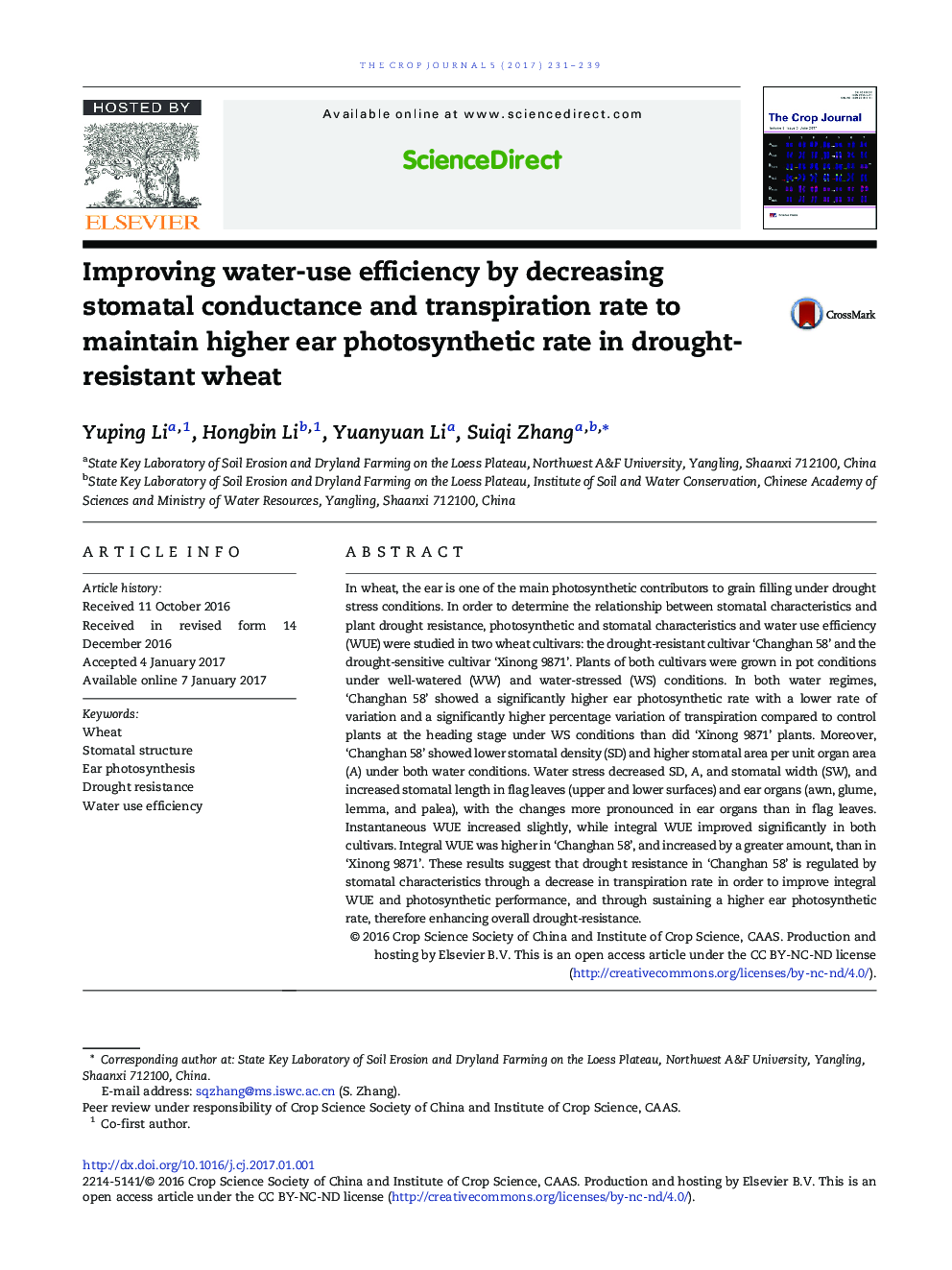| Article ID | Journal | Published Year | Pages | File Type |
|---|---|---|---|---|
| 5520780 | The Crop Journal | 2017 | 9 Pages |
In wheat, the ear is one of the main photosynthetic contributors to grain filling under drought stress conditions. In order to determine the relationship between stomatal characteristics and plant drought resistance, photosynthetic and stomatal characteristics and water use efficiency (WUE) were studied in two wheat cultivars: the drought-resistant cultivar 'Changhan 58' and the drought-sensitive cultivar 'Xinong 9871'. Plants of both cultivars were grown in pot conditions under well-watered (WW) and water-stressed (WS) conditions. In both water regimes, 'Changhan 58' showed a significantly higher ear photosynthetic rate with a lower rate of variation and a significantly higher percentage variation of transpiration compared to control plants at the heading stage under WS conditions than did 'Xinong 9871' plants. Moreover, 'Changhan 58' showed lower stomatal density (SD) and higher stomatal area per unit organ area (A) under both water conditions. Water stress decreased SD, A, and stomatal width (SW), and increased stomatal length in flag leaves (upper and lower surfaces) and ear organs (awn, glume, lemma, and palea), with the changes more pronounced in ear organs than in flag leaves. Instantaneous WUE increased slightly, while integral WUE improved significantly in both cultivars. Integral WUE was higher in 'Changhan 58', and increased by a greater amount, than in 'Xinong 9871'. These results suggest that drought resistance in 'Changhan 58' is regulated by stomatal characteristics through a decrease in transpiration rate in order to improve integral WUE and photosynthetic performance, and through sustaining a higher ear photosynthetic rate, therefore enhancing overall drought-resistance.
